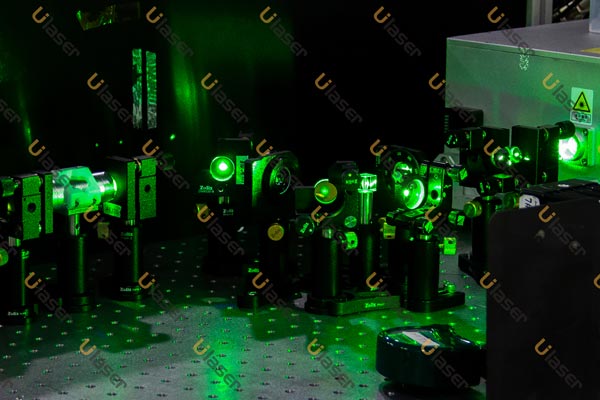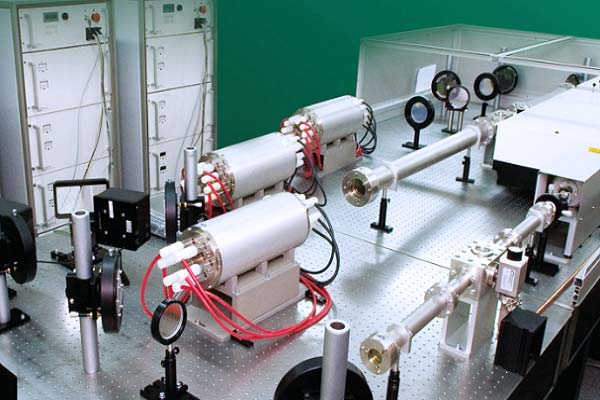Welcome to the fascinating world of lasers. At the heart of our technological advancements lie these coherent beams of light, pushing the boundaries of scientific research, medical treatment, and manufacturing. As a laser industry professional, I’d like to shed light on two of the most significant types of lasers – Nd:YAG and Nd Glass lasers.
Understanding Lasers
Before diving into specifics, it’s worth understanding what lasers are. The word ‘LASER’ is an acronym for Light Amplification by Stimulated Emission of Radiation. They produce an intense beam of light of a single wavelength, where all the light waves are in phase and have their peaks and troughs aligned, resulting in a ‘coherent’ beam of light. This coherence gives lasers their unique ability to focus on tight spots and stay narrow over great distances.

An In-depth Look at Nd:YAG Lasers
Nd:YAG lasers, standing for Neodymium-doped Yttrium Aluminum Garnet lasers, are a cornerstone of the solid-state laser family. These lasers utilize a synthetic garnet crystal as their lasing medium. The garnet crystal is doped with neodymium ions which, when excited, emit photons, leading to the production of laser light.
The crystal structure of Nd:YAG provides remarkable thermal conductivity, which is essential for high-power continuous operation. It allows for effective heat dissipation, ensuring the stability of the laser system and maintaining a high beam quality even under demanding operational circumstances.
Nd:YAG lasers operate primarily in the infrared region, with a principal wavelength of 1064 nm. However, through processes such as frequency doubling, other wavelengths can also be achieved.
These lasers are celebrated for their versatility, reliability, and adaptability, being useful in a wide range of applications. This includes manufacturing processes like welding, cutting, and drilling, medical procedures such as ophthalmic surgeries and cosmetic treatments, and scientific research applications including spectroscopy.
The spotlight is on the Nd:YAG q-switched picosecond laser, an exceptional player in the Nd:YAG laser family. Q-switching is a technique that allows for energy storage in the laser medium, to be released as a short, high-power light burst. When combined with mode-locking to achieve picosecond pulses, it results in high peak power outputs and incredible precision.

A Comprehensive Overview of Nd Glass Lasers
Nd Glass lasers, or Neodymium Glass lasers, employ glass that is doped with neodymium ions as their gain medium. Although they are less common compared to their Nd:YAG counterparts, these lasers hold unique advantages that make them suitable for specific applications.
Nd glass lasers are characterized by a broader emission bandwidth. This characteristic results from the less structured nature of glass compared to a crystal, allowing more variability in the energies of emitted photons. The broader bandwidth facilitates the generation of extremely short, high-energy pulses.
Despite lower thermal conductivity, Nd glass lasers excel in high-energy, pulsed laser systems. Their relatively large size and high gain coefficient enable the production of high energy pulses in the nanosecond to picosecond range. These high-energy pulses are crucial in high-energy physics research and inertial confinement fusion (ICF) experiments.
Comparisons of Nd:YAG Laser and Nd Glass Laser
When considering Nd:YAG versus Nd glass lasers, the choice largely depends on the specific requirements of the application.
Nd:YAG lasers are revered for their high power output, beam quality, and thermal conductivity. They excel in continuous wave (CW) and high-repetition-rate pulsed operation, which is useful in applications like laser cutting, welding, marking, and medical treatments.
In contrast, Nd glass lasers, with their broader bandwidth, enable the generation of ultra-short, high-energy pulses. This makes them ideal for high peak power applications, such as high-energy physics experiments and ICF research.
Understanding the strengths of each laser type is paramount to making the right choice for a given application. As always, the application defines the tool, not the other way around. In our commitment to client satisfaction, we at ULaser strive to guide and provide the most suitable laser solutions to meet our clients’ specific needs.

The Future of Laser Technology
As we cast our gaze towards the future, it’s clear that the laser technology landscape is a dynamic, rapidly evolving field. The advances we’ve seen in the last few decades are merely the prelude to the great leaps yet to come.
The potential for laser technology is vast. With developments in laser miniaturization, we’re seeing an increasing array of portable and handheld laser devices. These are proving invaluable across multiple fields, from compact laser pointers in education, portable laser cutting and engraving tools in manufacturing, to small, battery-operated medical lasers used in minimally invasive surgery and therapies.
Another significant trend in the laser industry is the pursuit of higher power and energy. High-power lasers, such as petawatt (PW) lasers, are set to revolutionize fields like nuclear fusion and particle acceleration. Meanwhile, in applications requiring precision and subtlety, the quest for shorter pulse durations continues. Ultrafast lasers, generating pulses in the femtosecond or even attosecond regime, promise breakthroughs in areas like microscopy, spectroscopy, and delicate surgical procedures.
Advancements in laser materials are also promising. While Nd:YAG and Nd glass have been the stalwarts of laser mediums, researchers are continually exploring new dopants and host materials to optimize laser performance. Novel materials, such as Yb:YAG and LuAG, are showing promising characteristics, expanding the range of laser wavelengths and enhancing laser efficiencies.

Finally, one cannot overlook the integral role of artificial intelligence (AI) and machine learning (ML) in shaping the future of lasers. By integrating AI and ML, we can expect smarter lasers with automated settings and feedback mechanisms, leading to improved performance, reliability, and usability.
Conclusion
Exploring the distinctive features and uses of Nd:YAG and Nd glass lasers provides us with a comprehensive understanding of their significant roles within the laser technology landscape. Each has unique attributes, making them ideal for certain applications, and understanding these differences is crucial when choosing the right laser for a specific need.
As we move forward, the laser industry promises a horizon full of innovation and technological advancements. Whether it’s the development of new laser materials, the pursuit of higher power and shorter pulse durations, or the integration of AI, the future of laser technology is undoubtedly bright and filled with limitless potential.
At ULaser, we are committed to staying at the forefront of these advancements. Our dedication to product quality, reasonable pricing, and the provision of tailored solutions is unwavering. As we continue to improve and innovate, we pledge to provide our clients with the best laser solutions that meet their specific requirements. We are not just providing products; we are creating partnerships grounded in trust and a shared vision for the future.
Related Video(s) with this Article
Related Product(s) with this Article
Related Application(s) with this Article